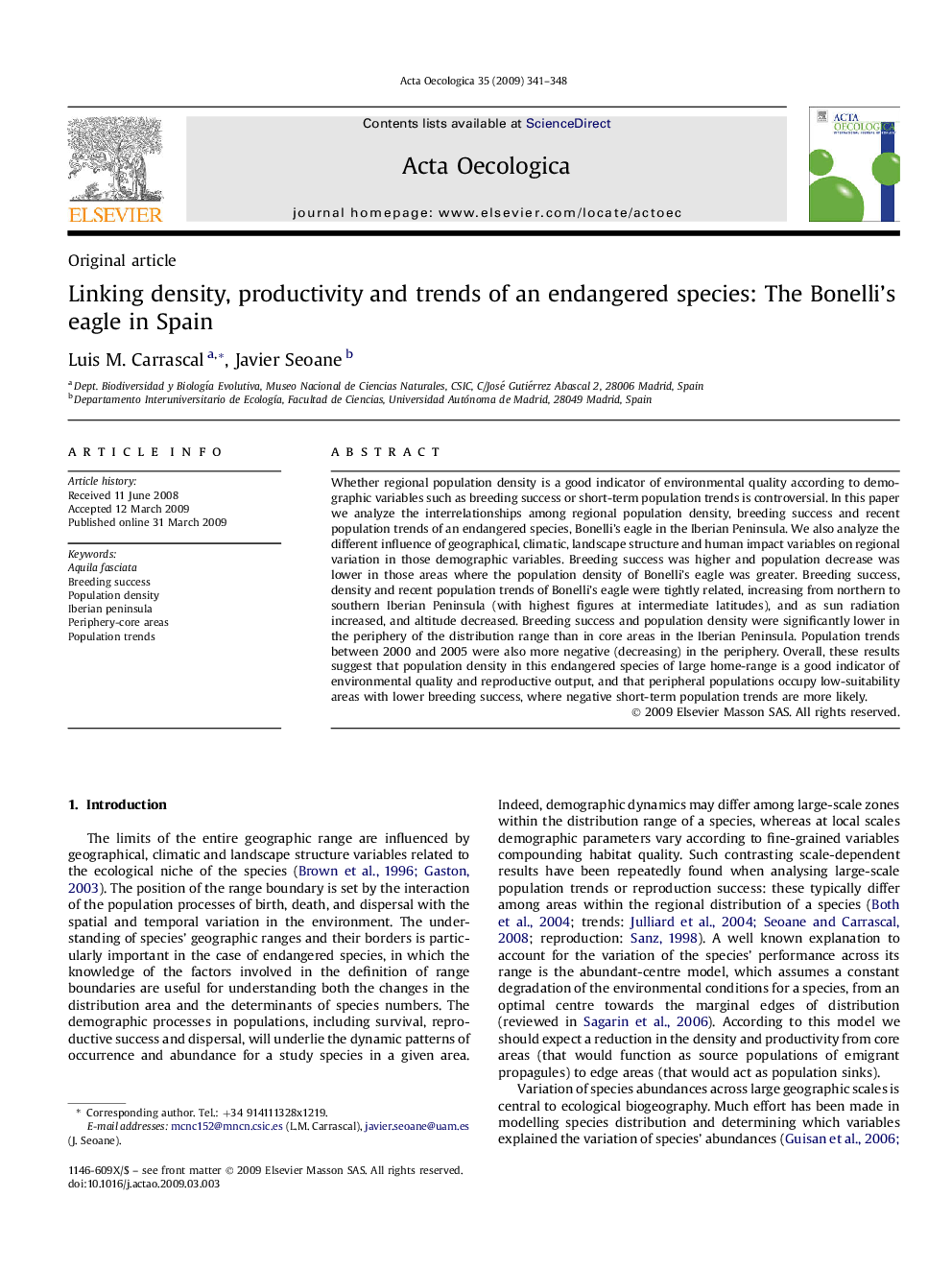| Article ID | Journal | Published Year | Pages | File Type |
|---|---|---|---|---|
| 4380998 | Acta Oecologica | 2009 | 8 Pages |
Abstract
Whether regional population density is a good indicator of environmental quality according to demographic variables such as breeding success or short-term population trends is controversial. In this paper we analyze the interrelationships among regional population density, breeding success and recent population trends of an endangered species, Bonelli's eagle in the Iberian Peninsula. We also analyze the different influence of geographical, climatic, landscape structure and human impact variables on regional variation in those demographic variables. Breeding success was higher and population decrease was lower in those areas where the population density of Bonelli's eagle was greater. Breeding success, density and recent population trends of Bonelli's eagle were tightly related, increasing from northern to southern Iberian Peninsula (with highest figures at intermediate latitudes), and as sun radiation increased, and altitude decreased. Breeding success and population density were significantly lower in the periphery of the distribution range than in core areas in the Iberian Peninsula. Population trends between 2000 and 2005 were also more negative (decreasing) in the periphery. Overall, these results suggest that population density in this endangered species of large home-range is a good indicator of environmental quality and reproductive output, and that peripheral populations occupy low-suitability areas with lower breeding success, where negative short-term population trends are more likely.
Related Topics
Life Sciences
Agricultural and Biological Sciences
Ecology, Evolution, Behavior and Systematics
Authors
Luis M. Carrascal, Javier Seoane,
